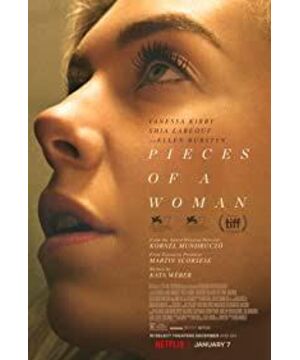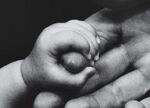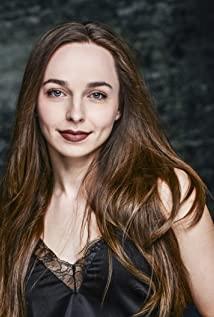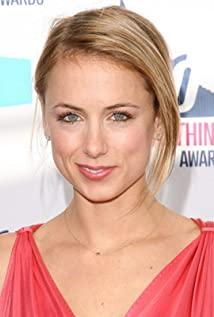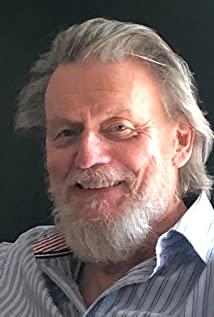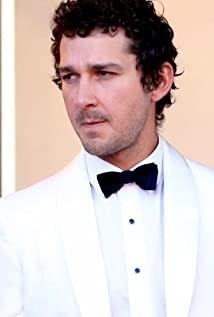(This article was first published on the WeChat public account of Muweier)
Fragments of a Woman is a powerful film. In my opinion, it goes beyond general expressions of the pain of childbirth, the loss of a child, the love and pain of intimacy, and elevates these issues to the level of existential pain that people face due to free will. .
"Women's Pieces" came from an unfortunate miscarriage of the director's couple (the director's wife is the screenwriter of the film, Kata Weber). The director once revealed in an interview that after this unfortunate incident, neither of them mentioned it very much. It didn't feel like a release until Kata Webb wrote the script.
The film first appeared on the stage as a play in 2018, and then turned into a movie in 2020. The director said he wanted to tell a story about grace, love, and strength, not about loss and tragedy ("would like to tell a story about grace, love, and strength, and not just about loss and tragedy").
The film begins with a 30-minute long indoor shot. The heroine, Martha, has ruptured amniotic fluid and is about to give birth. The scheduled midwife was unable to get out of the difficult labor and sent another person to come. Husband Sean escorted him intimately and told jokes to help his wife relax. It seemed that the couple had a good relationship. The midwife arrives. There was blood, howls of pain and gasps. After several hardships, Martha finally gave birth to a daughter, but the baby died of lack of oxygen because of the prolonged labor. And the specific reason, it seems that medicine has not yet given the answer.
The joy of rebirth and the icy transformation of death are for a split second. The midwife was charged with manslaughter. Afterwards, Martha seemed to go into "indifference" mode and seemed indifferent to her husband and the people around her.
The camera randomly skims the surface of her life: the color of her nail polish, she walks down the street in a coat and heels, she buys an apple, she eats an apple, the plants by the window, and the constant appearance of, Frozen river.
Some critics therefore felt that the first 30 minutes of the film were overwhelming, and after that, the rhythm was unbalanced and trivial. The author believes that these indifferent and even mechanical images are truly conveying the psychological state of the parties after the tragedy: feeling powerless because the tragedy cannot be recovered, feeling powerless because there is no one to blame, and even facing all the external consolation , also feel powerless - the non-client can never experience the client's pain, and the well-intentioned consolation pales in the face of great pain. Everything in the world flows, and it has nothing to do with her alone.
In fact, because the author himself suffered a similar medical accident, I was so sad that I had to stop and change my mood several times during the movie, but when I saw these silent scenes, I felt familiar as if I went back to that painful period. The pain and powerlessness are so great, so lingering, while others and the world are functioning normally. For self-protection, one can only try to divert energy to forget; and only the pain that one has experienced, as a unique memory, reminds them from time to time and resists forgetting.
Since the pain has no exit inward and outward, and it will not disappear, you can only seal yourself and the pain into a chrysalis, and there is a high wall between you and the world. In fact, this seemingly indifferent but painful numbness is so powerfully conveyed by the actress Vanessa Kirby, who won the Venice Film Festival for Best Actress.
And in this silence, Martha seeks self-redemption. The film presents a group of women who are victims of tragedy, but also actors, the main promoters of the plot, the possessors and givers of strength. The female protagonist, Martha, is a middle-class woman with a decent job. She returned to the office and continued to work a month after the loss of her beloved daughter. She made the decision to give birth at home to "let the child decide when to come into the world". She made the decision to donate her daughter's body to the medical school for research. She made a decision in court to forgive the midwife.
In the film's only conflicting moment, Martha's mother, Elizabeth, tells the story of her own mother: after her husband was in a concentration camp, she hid in an abandoned shack to give birth to Elizabeth, and went out to find food to support them. When the doctor was about to give up Elizabeth's life, she insisted.
The doctor lifted Elizabeth's feet like a chicken, and said that if she (Elizabeth) could still raise her head, it meant that there was still hope. "I lifted my head," recalls Elizabeth, already gray-haired. In doing so, she encouraged Martha to attend the trial.
These three generations of women share the same name, "Mother". In this casual interlude, we can feel a silent tenacity, an abundance of power and the succession of that power. In addition, the midwives and Martha's lawyers are also women, and they have their own professionalism and persistence.
And husband Sean, compared with the above female characters, showed more vulnerability. After the loss of his beloved daughter, he started drinking again after abstaining from drinking for many years, and his inner trauma needs to be vented by abusing others and even his wife. He even cheated on his wife's cousin to relieve the pain. And this derailment seems to have calmed him down physically. In the end, he accepted the financial support from his mother-in-law and left Martha, at least to avoid causing her secondary harm.
There is no intention to divide the film by gender. Instead, the film jumps out of the gender barriers common in marriage-themed movies. Martha and Sean's respective middle-class and blue-collar identities first broke through the traditional setting of "Marriage Life", "Marriage Story", "The Kramers" and other themes. In his masterpieces, women can be seen sacrificing their careers for their families). In people's impression, men are more restrained and restrained from emotional catharsis, and the difference between women who are more sensitive and easy to vent their emotions has also been completely reversed - in "Women's Fragments", it is husband Sean who is more prone to emotional out of control.
Breaking out of these typical settings allows the film to discuss trauma and recovery at a broader level. In a conversation with her mother, Martha confided how she really felt about the trauma—she lived with people watching and empathy. Her experience has drawn widespread accusations of attacks on midwives. But at the end of the day, that's her body, her choices, not how others see it. In the end, how to get out of the trauma is her own business, and only her own business.
The video has a detail. Sean flipped through the newspaper, and the title of a story mentioned the "witch-hunt" of midwives. This can be seen as an implicit reference to the film: the Middle Ages and early modern times, there were large-scale witch hunts in Europe and the United States. Witch hunts tend to be women. And midwives, because their work is linked to the gates of life and death, are often considered ominous and are typical victims of witch hunts.
At the end of the film, Martha said in court that she chose to forgive the midwife, believing that the midwife was as eagerly looking forward to the birth as she did. "There might be a reason for what happened, but we are not gonna find it here in this room." Her trauma cannot be undone by money. ), verdict, and sentence compensated. But since this is the case, how can she inflict such pain on others?
How to interpret this ending is of course a matter of opinion. For example, we can interpret it as a veiled religious agenda that preaches forgiveness and redemption. (Indeed, the current rise of movements such as home birth is not unrelated to religious advocacy.) We can even interpret it as a political agenda for tolerance of perpetrators and acceptance of dissidents. We can also simply understand it as a Hollywood-style mutual understanding of the warm "reunion" ending.
And the author personally, although I don’t like the hasty rewind at the end and the warm scene that is superfluous (the little girl on the tree), but I am also happy to provide another interpretation: some things in the world, some tragedies have no cause and effect. They collide by accident and completely change our lives. In the face of such a tragedy, the "healing" of science, reason, and psychology are all pale.
But if we want to survive, we can only rely on this or that method (religion, social support...) to get out, and the reason why this or that method can work is in the final analysis the instinctive survival force of human beings.
Martha chose to give birth at home, taking the theoretically small but still dire risks. Maybe she didn't even understand the risks when she made her decision. This is also the fundamental situation of our existence in connection with free will - we make choices in front of uncertainty (and fertility is a concentrated expression of uncertainty), and then face what Arendt calls irreversibility (irreversibility). ).
But as human beings, we still have to choose, create, and use our freedom. Just as Martha finally chose to take responsibility for her own decisions.
In the face of all the uncertainty that sweeps us, if we have any power, it is the power to make choices and to be responsible for them.
View more about Pieces of a Woman reviews


